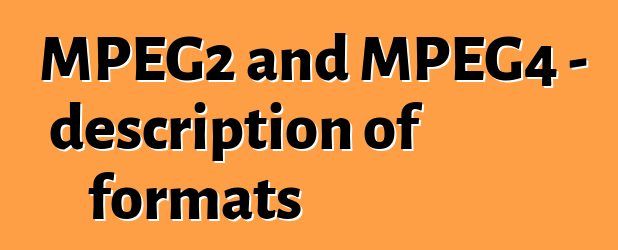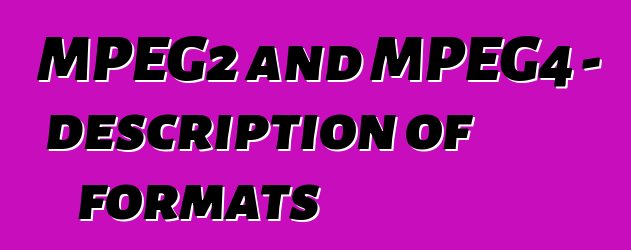





At the moment, most cable and satellite TV operators use the MPEG2 standard to transmit their signals. The MPEG2 standard was developed by the Moving Pictures Experts Group of the International Organization for Standardization. MPEG2 is published as the international standard ISO/IEC 13818. This standard only describes the general principles of compression, leaving the details to encoder manufacturers.
The compression algorithm is based on the features of human perception of the image. For example, the human eye perceives gradations of brightness much better than color; gradations of some colors are perceived better, others - worse.
In addition, most often a stationary background and several moving objects are shown on the screen. Therefore, it is sufficient to only transmit information about the base frame, and then transmit frames containing information about moving objects.
Another principle that is used in image compression in the MPEG2 standard is the discarding of insignificant information, similar to the principles used in the JPEG graphic format.
But back to the actual topic of our conversation. Technology development is governed by the principle: better, more beautiful, more with less and at a lower price. In our case, we mean a picture of better quality, with a smaller width of the information channel (satellite, cable, terrestrial). The improvement of MPEG2 video codecs has led to the fact that now for image transmission a channel with a bandwidth of 2 times less is required than at the beginning of the era of digital broadcasting. Over time, it has become obvious that new developments can significantly reduce the amount of transmitted information, but they do not correspond to the existing MPEG2 format. Therefore, the specialists were faced with the task of developing a more universal standard corresponding to modern technologies.
For digital satellite television using MPEG2, with a resolution of 720 by 576 pixels, the maximum information flow rate is 15 Mbps, and the practically used flow rate is 3-4 Mbps. On one transponder (receiver - transmitter) on the satellite, 8-12 channels usually fit.
Since HDTV assumes a resolution of 1920 by 1080 pixels, i.e. Since the screen area is 5 times larger than conventional TV, it would be necessary to rent half of the transponder to broadcast one HDTV channel in the MPEG2 standard.
A new step in the development of image compression algorithms was the MPEG4 standard. The idea of the MPEG4 standard is not to standardize one product, but to combine several sub-standards from which vendors can choose the one that best suits their needs.
The most important substandards are:
ISO 14496-1 (Systems), MP4 container format, animation/interactivity (e.g. DVD menu)
ISO 14496-2 (Video #1), Advanced Simple Profile (ASP)
ISO 14496-3 (Audio), Advanced Audio Coding (AAC)
ISO 14496-10 (Video #2), Advanced Video Coding (AVC), also known as H.264.
I will not list the features of the technologies and algorithms that were used in the development of the MPEG4 format.
Let's move on to the most important: the combined use of DVB-S2 (an advanced digital data transmission standard) and H.264 allows you to place 6-8 channels in the transponder, but already HDTV television. It should be noted that, as always, an increase in quality does not come free of charge: the number of calculations has increased significantly both in receivers and on transmitting equipment. Unfortunately, this has greatly affected the cost of equipment for consumers and for broadcasters.





